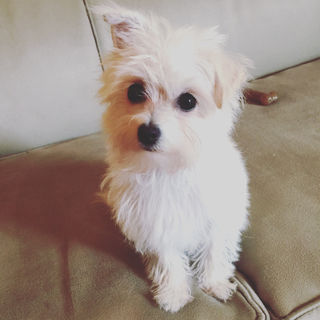Consumer Behavior
Commandeering Cuteness for Commercialism
Why small fry means big profit
Posted August 27, 2016

This is my writing partner Samie. I love this little girl. And love and care is all she really wants. My friend rescued her from an animal shelter with a high kill rate. Today I’m babysitting.
Weighing in at only five pounds, she punches way above her weight class in her ability to move people. Every time I look at Samie I feel compelled to give her a soothing belly rub, a delicious treat or purchase her a brand new toy. I have yet to teach her a trick. But every time I look her way, she is the one that’s actually playing a trick on me.
That’s because evolution has instilled in our nervous system a feel good response to human babies. Research has shown that gazing at cute babies releases dopamine, which automatically shifts our feelings and behaviors in their favor. And since the goal of evolution is survival, this makes perfect sense. If we didn’t find these vulnerable little creatures so compelling and actively assist in promoting their welfare, they would never survive and neither would our species.
Samie is the beneficiary of an evolutionary spill over. In other words, we find baby animals so adorable because our brains have evolved a cuteness code that interprets features like big eyes, little noses and plump little bodies in much the same way it processes the appearances of human babies. This neural code of cuteness does not discriminate across species, so it leaks onto virtually all other baby animals. It even spills over onto inanimate objects that tend to share these attributes.
In this instance, nature’s artifice is Samie’s gain. She eats freshly cooked human food, commands $85 haircuts and has a never-ending supply of chew toys. And when I take her to the dog park, I watch vigilantly over her and protect her not unlike a father watching over his own toddler. All that Samie wants to do right now is rest her tiny body against the warmth of the side of my leg as we sit comfortably on the sofa. Ordinarily she prefers my lap, which unfortunately is being occupied by my laptop as I write this article. I rub her belly. She lifts my spirits. Seems to me like a fair value exchange. And both Samie and I are totally cool with this arrangement.
What you may not realize is the extent to which cuteness can be packaged and scaled as a commodity for commercial gain en masse. That’s right, small is the new big when it comes to business and branding. That’s because the goal of marketing, biologically speaking, is to trigger the release of dopamine and shift those feelings in the brand’s favor. That’s because dopamine not only triggers good feelings, but also generates wanting behavior and even addiction. Marketers call it brand loyalty and retention. If you’re a shopaholic, blame it on dopamine.
Take for instance the most viral ads of 2015 and you’ll notice that 3 of the top 5 of the most shared ads commandeered the almighty power of cuteness in the form of puppies and other baby animals. This is what is known as “earned media” (as compared to “paid media”), because it doesn’t cost the marketer anything and is the result of creating an effective ad that spreads organically through the web. Ads become viral when they trigger emotions that compel you to share in those feelings with others. This results in consumers generating the media impressions on behalf of the company free of charge, by voluntarily sharing the ad with their friends online. This is marketing gold and the holy grail of advertising.
1) Android "Friends Furever"
6,432,921 shares
3) Purina "Puppyhood"
3,021,499 shares
5) Budweiser "Lost Dog"
2,808,541 shares
And this effect doesn’t just spill over onto the advertising. It overlaps onto the actual product itself. Pokémon Go players reportedly forked over upwards of $250 million on the addictive mobile game in the first few weeks of the product’s launch according to an international survey. Gamers eagerly engaged with the brand’s cute and cuddly cast of characters in the real world through the use of augmented reality. And the numbers are suggesting that the game is tracking to hit $1billion in sales, according to the Financial Times.
And witness recently, a surreal video that purportedly shows thousands of people stampeding the streets of Taiwan while playing Pokémon Go in an effort to capture the rare and elusive Snorlax. Players seem out of control, ignoring traffic safety and risking their own lives for a video game! But that shouldn’t be so surprising if you understand that the dopamine response generated from the cuteness code is not something that we humans or consumers consciously control. Contagion in marketing is caused by feelings not reasoning.
And there are numerous other examples of how the cuteness code can be hijacked and leveraged by inanimate products for commercial gain. The Volkswagen Beetle is one of the top selling cars of all time and was launched by the acclaimed “Think Small” campaign that was ranked as the best advertising campaign of the twentieth century by industry pundits. Similarly, MINI has been proven to be one of BMW’s most successful investments ever. And consumers often pay more for a mini 7.5 ounce can of Coke than they do for a regular 12 ounce can, even though the regular can is nearly twice the size.
I have to go now. Samie just woke up. And that means we have to head to the dog park. She’s insisting. I don’t know about you, but I’ll take Samie over Pikachu any day of the week.
If you would like to learn more about the non-conscious influences on our brand purchases and why ideas go viral. Check out my book, my articles on twitter, or our live workshops at intentla.com.
http://unconsciousbranding.com




